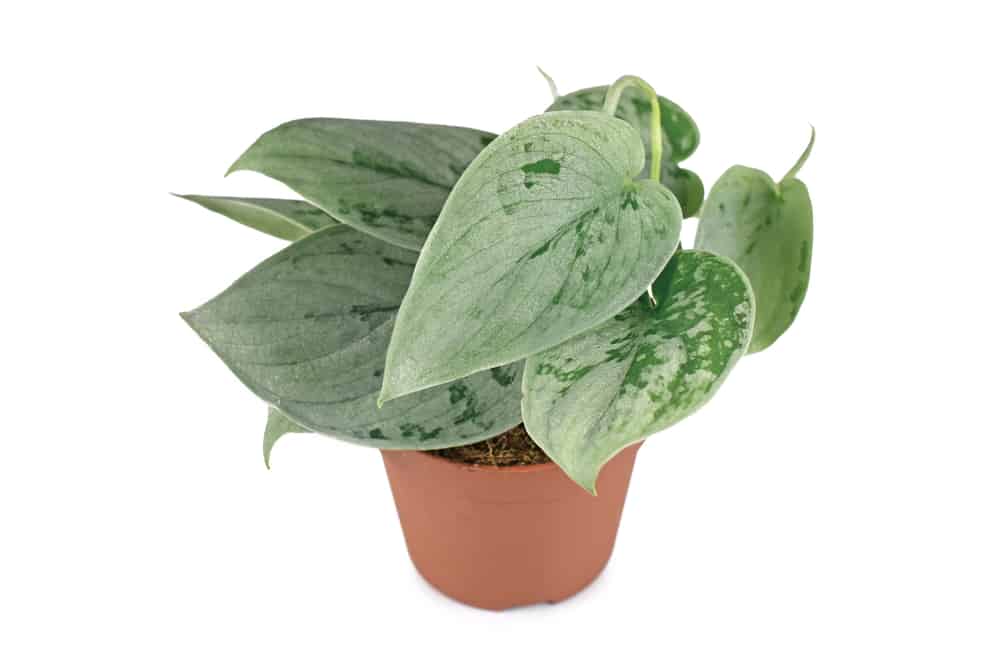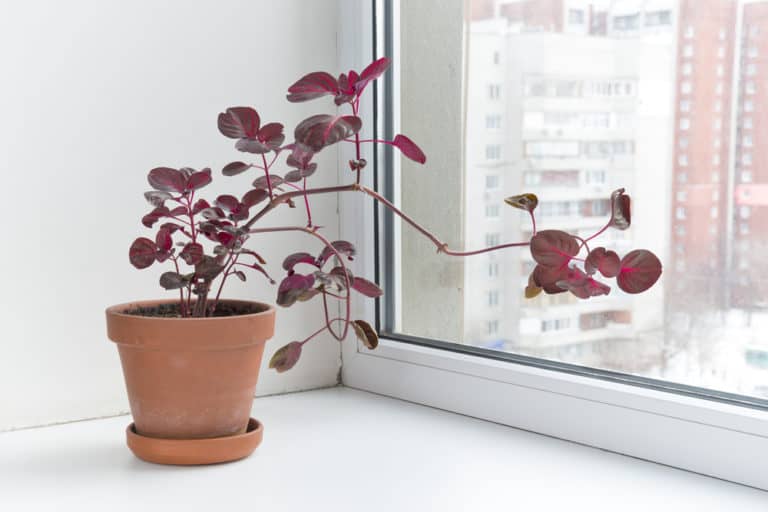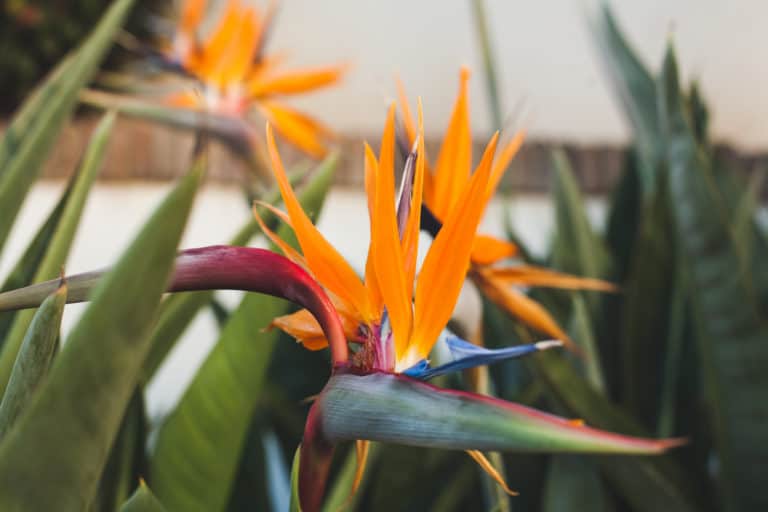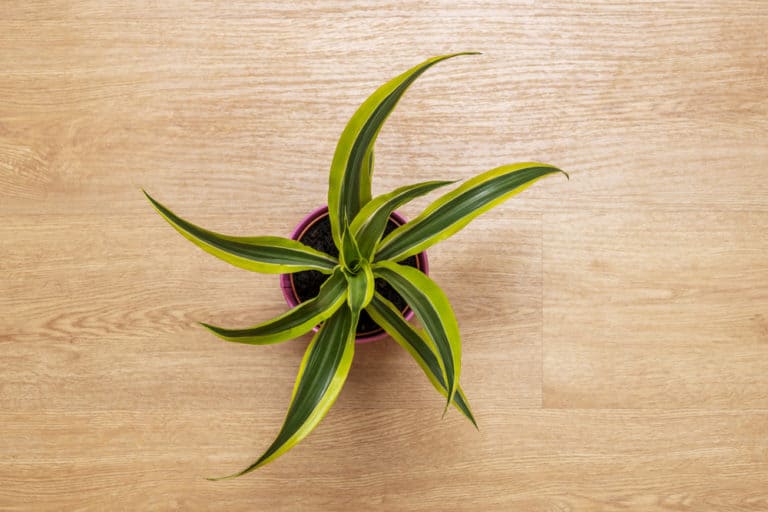Scindapsus Pictus ‘Silvery Ann’ Care Guide (2024)

If you wish to invest in a flattering houseplant to brighten up your home, the Scindapsus Silvery Ann is your best choice! Also known as the “Silvery Ann Pothos”, the plant features a gorgeous set of matte green foliage with generous splashes of silver, which is a desirable feature for a plant that can be easily grown.
| Scientific Name | Scindapsus pictus ‘Silvery Ann’ |
| Common Name | Satin Pothos, Silver Pothos, Pothos Silvery Ann |
| Light | Bright indirect sunlight |
| Watering | Once a week, water if the top half of the soil is dry |
| Temperature | 60-75°F (15°C-23°C). |
| Hardiness Zone | USDA Hardiness Zones 9-11 |
| Humidity | 50-70% |
| Soil Type | Equal proportion of soil, OM, perlite/vermiculite |
| Soil pH | 6.1 to 6.5 (mildly acidic to slightly acidic) |
| Fertilizing | A balanced feed once a month in spring and summer |
| Repotting | Every 2-3 years |
| Pruning | When the foliage becomes dull or if it has trailed for too long |
| Propagation | Stem Cuttings and Division |
| Toxicity | Toxic to humans and pets |
| Mature Size | Can grow up to 1 meter and can spread up to 10 feet |
| Bloom Time | Summer, but rarely blooms |
What’s Unique About Scindapsus Silvery Ann?
The Scindapsus Silvery Ann plant is a stunning member of the Araceae family, which makes it an aroid, not a pothos plant, contrary to the plant’s many common names. This is because pothos is a member of the Epipremnum genus, while the Scindapsus is its own genus.
Scindapsus Silvery Ann plants are notable for their rich silvery splashes over matte green foliage, sometimes even covering the entire surfaces of the leaves. While it’s easy to confuse the silvery ann with other varieties, its leaves are more silvery and the variegation appears to be more chaotic.
Native to Southeast Asia, the silvery ann is quite hardy and may have a similar growth requirement to other tropical houseplants.
Scindapsus Silvery Ann Care
The Scindapsus Silvery Ann plant care needs are not too demanding. They are quite easy to tend to and therefore ideal for beginners. The plant may only need to be watered a few times a week and be fed at least once a month. Below are more ideas to guide you on the dos and don’ts of Silvery Ann Pothos care.
Light
The Scindapsus Silvery Ann light requirements range from bright to indirect light. Medium to low light may not be ideal if you wish to retain the plant’s lovely variegation. Lights that are lower than the optimum may force the plant to develop more chlorophyll in order to increase photosynthesis, this ultimately reverts the variegated foliage to green.
Silvery Ann Pothos light needs may also be attained indoors by placing the plant at least 2-3 ft. near a window with curtains. This gives access to an ample amount of light but at the same filters, protects the foliage if the light becomes too intense.
When grown outside, full sun exposure must be avoided, and so it may be best to grow the plant below canopies or near larger plants, so that it may receive some afternoon shade
Watering
Similar to most tropical houseplants, the Scindapsus Silvery Ann watering needs are only minimal. It has quite some tolerance to drought and will thrive with a little bit of neglect. On the other hand, overwatering is often problematic and may cause root rotting.
It is ideal to water Silvery Ann Pothos at least once a week. You may need to frequently water in the summer and reduce it during winter.
Pro tip: To check your Silvery ann’s watering needs, stick your index finger about an inch on the soil surface and see if any dirt will adhere to it. If none and it feels dry to touch, water the plant thoroughly.
Temperature
As may be expected from a plant hailing from the tropics, the Scindapsus Silvery Ann temperature range is between 60-75°F (15°C-23°C). This makes the plant suitable in a warm and humid environment.
The plant does not possess a low-temperature tolerance so it is best to not let the temperature for Silvery Ann Pothos go below 60°F. Moreover, a 45°F temperature can ultimately damage the plant.
Scindapsus Silvery Ann will thrive at USDA hardiness zones 9-11. If grown indoors, avoid placing the plant directly next to a window as it may be exposed to a cold draft, which can cause freezing injury to the plant’s delicate foliage.
Humidity
When it comes to the Scindapsus Silvery Ann humidity requirements, know that the plant can tolerate a low to high humidity level, so it is often not an issue.
The ideal humidity for Silvery Ann Pothos is between 50 to 70%. Though it isn’t particularly picky, you can still improve the air moisture, especially indoors, if you think it becomes too dry.
Occasional misting here and there can also make a difference. You may also use a humidifier or simply set up a pebble stray. This will help your Silvery ann pothos grow at its optimum, which will certainly reward you with stunning foliage.
Soil
A commercial soil mix works just fine as a Scindapsus Silvery Ann soil because you simply want something that holds enough moisture, but with added texture for drainage. The ideal ph level for Silvery Ann pothos is between 6.1 to 6.5 which is slightly acidic.
To make your own soil for Silvery Ann Pothos, mix an equal proportion of fresh garden soil, perlite, vermiculite, pumice, and coarse sand. The ‘feel method’ should be your guide for the ideal potting mix, that is, the soil should hold when clumped together by hand and may slightly form a ribbon but can be easily dispersed.
Fertilizer
While the plant is not a heavy feeder, giving the Scindapsus Silvery Ann fertilizer from time to time ensures favorable growth. Without fertilizer, the plant may develop fewer and smaller leaves, and the growth may also be stunted.
You may use any all-purpose fertilizer for Silvery Ann Pothos but avoid using cheaper ones as they tend to accumulate in the soil over time. Use a balanced fertilizer ratio such as 14-14-14 NPK, but be sure not to overfeed the plant.
The recommended application rate of fertilizer for silvery ann is at least once a month, especially during summer and spring, when the plant is actively growing.
Potting & Repotting
Scindapsus Silvery Ann repotting is usually done after about 2 to 3 years. Its growth is mainly dependent on how the plant was initially potted as well as the pot size.
If the plant becomes root bound or if you can already see some roots protruding from the base of the plant, that’s when you need to consider repotting Silvery Ann Pothos.
Pro tip: When potting silvery ann, prepare a fresh soil mix and choose a container twice the size of the current pot. Gently remove the plant and brush off any excess soil from the root ball. Fill the new container with half of the potting mix and place the plant in the center. Fill the remaining soil into the pot and water the plant as needed.
Pruning
In their wild habitat, the Silvery ann pothos can grow up to 10 feet tall, but with domestic upbringing, the plant can only grow to as much as 3-4 feet in height. When grown in a hanging basket, the plant can spread to a couple of meters. Hence, the need for Scindapsus Silvery Ann pruning depends mainly on how it was planted.
Cutting Silvery Ann Pothos is a good practice in order to keep it vibrant and healthy-looking. Make it a habit to trim off spent foliage and yellowed leaves, starting from the base of the plant where the older leaves predominate.
Propagation
The Scindapsus Silvery Ann propagation is quite convenient because it easily develops roots. Some of the common ways to propagate Silvery Ann Pothos are through the use of stem cuttings and division.
For stem cuttings, snip a few stems with at least 2 to 3 leaves and preferably with a node to give room for faster root development. You can either let the cuttings sit on water or have them planted directly into the soil.
Do the division process when repotting the plant. With this, you can separate the root ball into a few segments and have them planted in a separate container. Water thoroughly and place on a spot that receives an ample amount of light.
Common Problems of Scindapsus Silvery Ann
The plant is generally easy to grow and is actually beginner-friendly. However, if you notice that the plant has yellow and droopy leaves, it may be a sign of overwatering. To prevent Scindapsus Silvery Ann problems, always follow the recommended watering cycle.
Below are other problems with Silvery Ann Pothos that you may encounter and the ways you can address them.
Pests
While the Scindapsus Silvery Ann pests are of rare occurrence, they may still be problematic if not addressed immediately. Some common insects that may pester your silvery ann pothos are mealybugs, spider mites, and scale bugs. They tend to feed on the plant sap affecting the plant’s delicate foliage.
Pro tip: If you’re seeing signs of infestation, spray the leaves of your Silvery Ann Pothos with alcohol mix and wipe off any debris or molds that may have formed on the surface. You can also use horticultural oils such as neem oil or citronella oil as these have compounds that can repel bugs and thus prevent their proliferation.
Diseases
Scindapsus Silvery Ann diseases are often caused by improper cultural management, such as overwatering, which is a notorious plant killer. Overwatering may cause waterlogging which predisposes the root system to root rot.
When the soil is oversaturated with moisture, oxygen may also become deficient, causing the plant to compromise its normal metabolic function. This will cause wilting and eventually kills off the plant. When the roots of Silvery Ann Pothos are rotting, it also makes them vulnerable to both bacterial and fungal infection.
Pro tip: Water the plant as needed, at least once a week. When the plant becomes infected with a disease, immediately prune the infected plant parts to prevent spreading it to other plants.
Growing Problems
Some of the growing problems that you may also encounter with Silvery ann pothos are yellowing of the leaves, reversion of the variegation to green, and stunted growth.
To prevent having a sick plant in your collection, be sure to trim the plant from time to time, as this will allow them to bounce back and look healthier. Avoid overwatering by all means, and provide a sufficient amount of bright filtered light. Fertilizers may also be applied when you notice stunted growth.
When propagating, choose healthy propagules and use sterile tools, particularly when pruning the plant.
Toxicity of Scindapsus Silvery Ann
Unfortunately, the Silvery Ann pothos is toxic to humans and animals. So you might want to consider a different plant when you have a lot of furry friends inside your home. The toxicity of the Silver ann pothos is attributed to the calcium oxalate crystals that if ingested, can cause symptoms such as difficulty in breathing and vomiting.
For Humans
While not entirely deadly, the consumption of calcium oxalate crystals – which are found in both stems and leaves of the plant – can cause problems that may require medical attention. Small children are quite vulnerable as they are more likely to play with the parts of the plant.
Choose an ideal location that is out of their reach, such as an elevated cabinet, or simply grow the plant on a hanging basket. If ingested in large amounts, some of the symptoms that may appear in humans are nausea, vomiting, mouth and skin irritation, and even diarrhea. If any of these symptoms appear, immediately call for aid.
For Pets
Some of your pets may be at risk if you choose to grow the Scindapsus Silvery Ann inside your home. This may not be ideal, especially for cat owners, as they can jump to high places and may still reach a hanging plant. Hence, the plant may be best grown outside for their safety.
Some of the symptoms that may occur if the plant has been ingested in large amounts are pawning of the face, blisters forming in the mouth, blood in stool and urine, and restlessness. If you suspect that your pets have eaten any of the plant parts, call your vet immediately.
Scindapsus Silvery Ann Appearance
The Scindapsus Silvery Ann appearance is what certainly makes it marketable. A highly coveted aroid plant because of the luscious foliage that is heavily variegated. Given the kind of environment from which the plant originates, the key to amplifying the plant’s best features is by providing a humid and warm growing condition.
Foliage
There’s no doubt that the foilage of Scindapsus Silvery Ann is its most distinguishing feature. Each leaf expands up to about 5 to 10 cm and is characterized by a generous and chaotic splash of silver on both the upper and lower surface.
What sets the plant apart from its other counterparts are the leaves that are much more silvery due to intense variegation. However, it may easily revert to green if exposed in low light conditions.
Pro tip: The key to growing Scindapsus Silvery Ann into a healthy-looking specimen is trimming off spent leaves which can easily harbor diseases.
Flowering
There is little information known about Scindapsus Silvery Ann flowering as they rarely occur in cultivation. However, it is assumed that they tend to flower in their wild habitat – often in the tropical forests of Southeast Asia.
As an aroid species, the Silvery Ann Pothos flower may be expected to be similar to those of arum plants, and these are tiny inflorescences, known as spadix which are covered by a delicate-looking spathe. The inflorescences would usually appear in a bright green color, later on developing into small berries.
The blooming period, even if uncommon, is reported to occur mostly during summer.
Size and Growth
In the wild, the size of Scindapsus Silvery Ann may reach over a meter tall and spread up to 10 feet. However, in cultivation, the plant rarely reaches beyond a meter in height. If grown as a hanging plant, you can just let the plant trail downward and then snip later on to maintain the desired length.
Generally, the Scindapsus Silvery Ann has a slow growth rate, hence regular repotting is not needed. Over time, the long and leafy stems can spread and you can train it by staking the plant or by establishing a pole to guide it as it climbs.
Scindapsus Silvery Ann Fragrance
The Scindapsus Silvery Ann fragrance is insignificant and there is no distinct scent that can be attributed to the plant However, there are certain kinds of smell that you may want to watch out for, as they can signify an occurring infestation or an impending spread of disease.
For example, if a plant is suffering from root rot, an unpleasant odor may emanate from the base of the plant. In addition, scale insects may also secrete sticky “honeydew” that can result in sooty molds, which may release a rusty and earth-like smell. Especially when the plants are heavily infested.
Suggested Uses for Scindapsus Silvery Ann
The Scindapsus Silvery Ann proves to be a real stunner whether grown indoors or outdoors as a decorative plant. Add to that, the plant has an air filtering ability and thus is perfect for a household setting. With its trailing habit, you can also let the plant climb into the wall of your garden for that fresh tropical vibe.
When raised as a hanging plant, it’s crucial not to let the roots dry out so that the plant will continue to grow and develop more variegated leaves. Oftentimes, Scindapsus Silvery Ann is allowed to creep in many green walls in houses, but they also make a lovely pot plant for offices and other establishments.
FAQ
What is Scindapsus Silvery Ann?
The Scindapsus Silvery Ann plant is a member of the Araceae family. It is an aroid recognized for its highly variegated foliage and trailing growth habit.
How to identify Scindapsus Silvery Ann?
The Scindapsus Silvery Ann has leaves that have generous splashes of silver on both the upper and lower side. It has more intense and chaotic variegation than other varieties.
How to care for Scindapsus Silvery Ann?
The Scindapsus Silvery Ann needs an adequate amount of filtered light, and occasional feeding, rich well-draining soil for optimum growth, and a warm humid environment.
How to grow Scindapsus Silvery Ann indoors?
To grow the Scindapsus Silvery Ann indoors, place the plant 2-3 feet from the window to give the plant just enough access to bright indirect light and away from cold drafts.
How to grow Scindapsus Silvery Ann outdoors?
It is best to grow the Scindapsus Silvery Ann in a garden near and below other plants so it can receive some afternoon shade. Water as needed and feed at least once a month.
How fast does Scindapsus Silvery Ann grow?
The Scindapsus Silvery Ann has a relatively slow growth rate and may take about two to three years before it has to be repotted to a new container.
How tall does Scindapsus Silvery Ann grow?
In cultivation, the plant can grow up to 1 meter in height and can spread a couple more meters, depending on how the plant was established.
How to make Scindapsus Silvery Ann grow faster?
You can use a balanced fertilizer for your Silvery Ann plants to help them attain faster growth and develop a more variegated and healthier-looking set of foliage.
How to stake Scindapsus Silvery Ann?
Place a stake behind the Scindapsus Silvery Ann in order to guide the plant as it climbs over time, you can also use a pole to provide support.
How to pot Scindapsus Silvery Ann?
Prepare a fresh potting mix and fill a clean container with half. Place the plant in the center and fill the rest of the container with the remaining soil. Water thoroughly.
How to revive Scindapsus Silvery Ann?
Pruning the plant is a good practice to bring back your plant’s vibrance and attain a fuller look. If it is infected with a disease, you can also prune off the infected parts.
Why is my Scindapsus Silvery Ann dying?
Overwatering is often the cause of a dying aroid plant, hence it should be avoided at all costs. Not only does it cause root rot but it also predisposes the plant to other diseases.
Why is my Scindapsus Silvery Ann drooping?
Drooping leaves are either caused by overwatering, underwatering, or a disease. Investigate the cause and treat as deemed appropriate. Also, be sure to maintain an optimum temperature and humidity.
How cold can Scindapsus Silvery Ann tolerate?
Do not allow the temperature for Silvery Ann Pothos to go below 60°F- 45°F, as this can ultimately damage the plant. Avoid exposing the plant to cold drafts as it may cause freezing injury.
How to get rid of pests on Scindapsus Silvery Ann?
Shoo away pests by simply spraying the plant with alcohol mix to get rid of any debris. You can also wipe the leaves using neem oil to repel any damaging insects.
Is Scindapsus Silvery Ann toxic to cats?
Yes. The Scindapsus Silvery Ann is toxic to cats. The plant contains calcium oxalate crystals, which if ingested, can cause irritation of the mouth and blood in stool/urine.
Is Scindapsus Silvery Ann toxic to dogs?
Yes. The Scindapsus Silvery Ann is toxic to dogs. The leaves and stems have calcium oxalate crystals which can cause irritation, blisters in the mouth, and restlessness.
Is Scindapsus Silvery Ann toxic to children?
Yes. The Scindapsus Silvery is equally toxic to small children and adults, especially if ingested in large amounts. It can cause diarrhea, vomiting, and nausea.
Is Scindapsus Silvery Ann toxic to humans?
Yes. The Scindapsus Silvery is equally toxic to humans. Calcium oxalates found in the plant can cause symptoms such as skin and mouth irritation, difficulty breathing and swallowing, and diarrhea.
Does Scindapsus Silvery Ann have a scent?
The Scindapsus Silver does not have a distinct scent or fragrance. However, some reports suggest that the plant may have an earthy smell, similar to damp wood bark.






